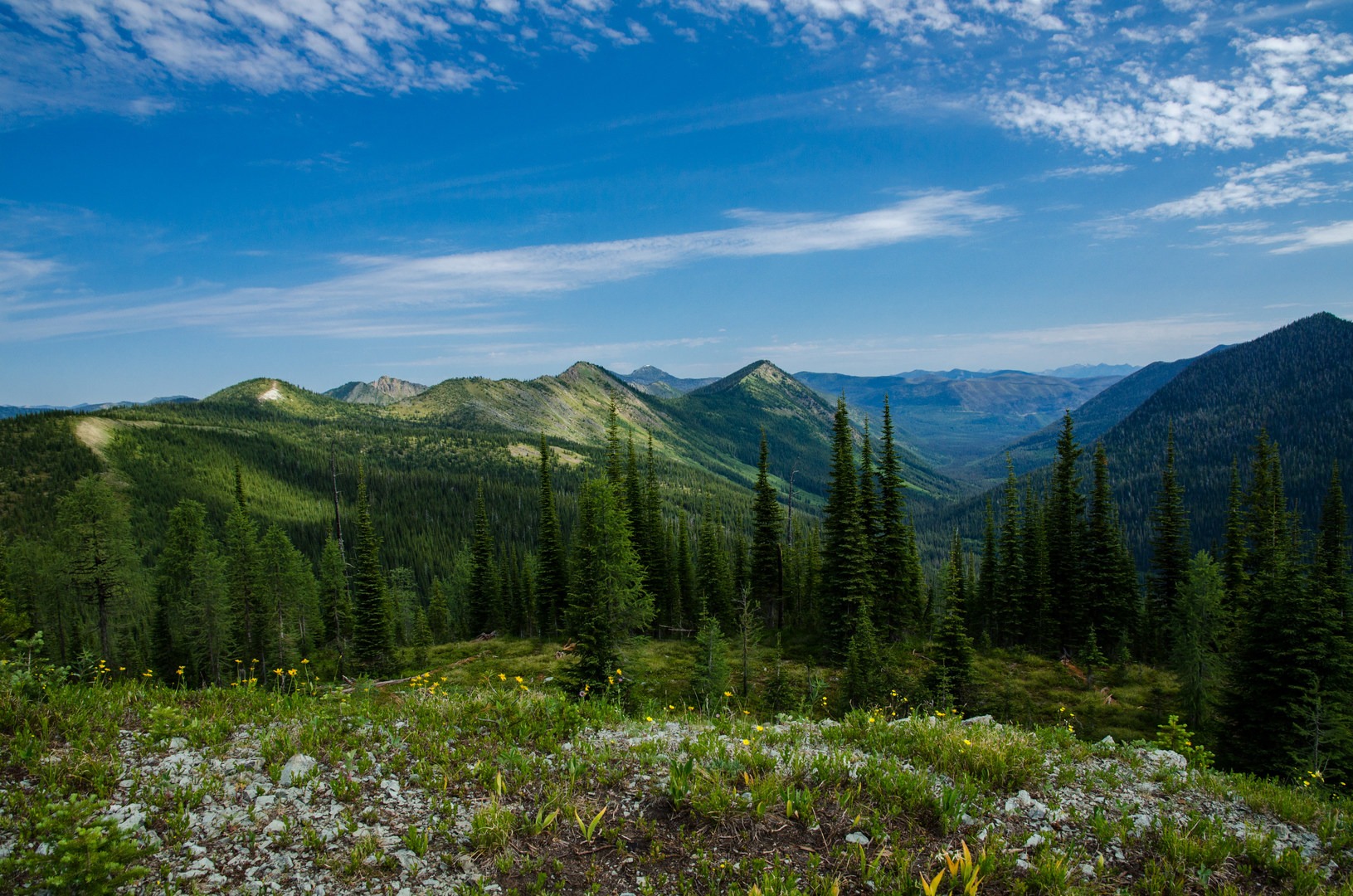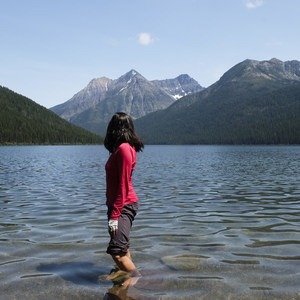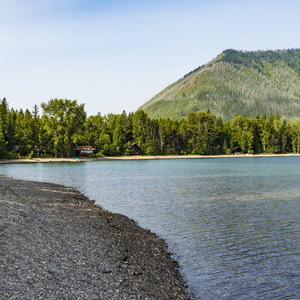Leaving Glacier National Park and the charming town of Polebridge, Montana, behind, the next section of the Pacific Northwest Trail follows a serpentine network of trails and Forest Service roads for 74 miles to Eureka, Montana. On the way the trail leads you through the Flathead National Forest and Kootenai National Forest and back up to the U.S. and Canada border. It's a very good idea to bring your passport along on this section of the trail, as border patrol often stops hikers in the area.
Hiking through Glacier National Park, the PNT is well marked with the recognizable white and yellow emblem of the trail. However, signage is minimal in the national forests here and along much of the rest of the PNT, and you'll encounter many junctions where you'll need to know where you are to continue on the right trail.
This section of the trail starts and ends with a long road walk. Leaving Polebridge, the PNT goes for 13.4 miles down the Hay Creek Road before picking up the Whitefish Divide Trail. And again, upon reaching the border north of Eureka, 13.7 miles of road walking heading south lie between the end of the trail and Eureka, Montana. The trail hiking in the area is fantastic, however, with numerous ridgelines to hike, campsites alongside mountain lakes, and fire lookouts to visit along the way. Thru-hikers who start from Glacier National Park will likely be in these forests during the peak of wildflower season with colorful displays speckling broad mountain and valley views. Along a few of the ridgelines you'll spend many miles between places to refill on water, so it is important to fill up frequently when water is found.
For those choosing to skip a visit to Polebridge and avoid the first of the long road walks for the PNT, a northern alternate route follows a few different trails that run a few miles below the border with Canada. Polebridge is a worthwhile stop as far as trail towns go, but if you need to shave miles and a day or two from the trip, this northern shortcut route through the Flathead National Forest is a viable alternative.
Unlike the sections of the trail in the national parks, few restrictions are in place for thru-hikers on national forest land. However, this doesn't reduce the risks posed by wildlife, the likelihood of bear encounters, and the need to maintain low-impact Leave No Trace practices. All trash should be packed out of the forests and disposed of in the proper manner. Bear mace and bear canisters are still a good idea for transporting food. Dispersed camping is possible, and backcountry campsites can be used in a first-come, first-served manner.
From the summit of Green Mountain at 7,290 feet the trail and road steadily descends into Eureka, dropping roughly 4,500 feet over a course of almost 20 miles. The small town of Eureka, population 1,100, has a few grocery stores, restaurants, bars, and hardware stores where you can replace any broken items or pick up enough food for the next section of the trail. For a complete listing of businesses in Eureka, check out the town's website. Heading west from Eureka, the last town in Montana to visit is Yaak, which is little more than a wayside stopover before the PNT crosses into Idaho and you can resupply at Bonners Ferry.
For additional details, refer to the following PNT sections:










Comments
Sign In and share them.